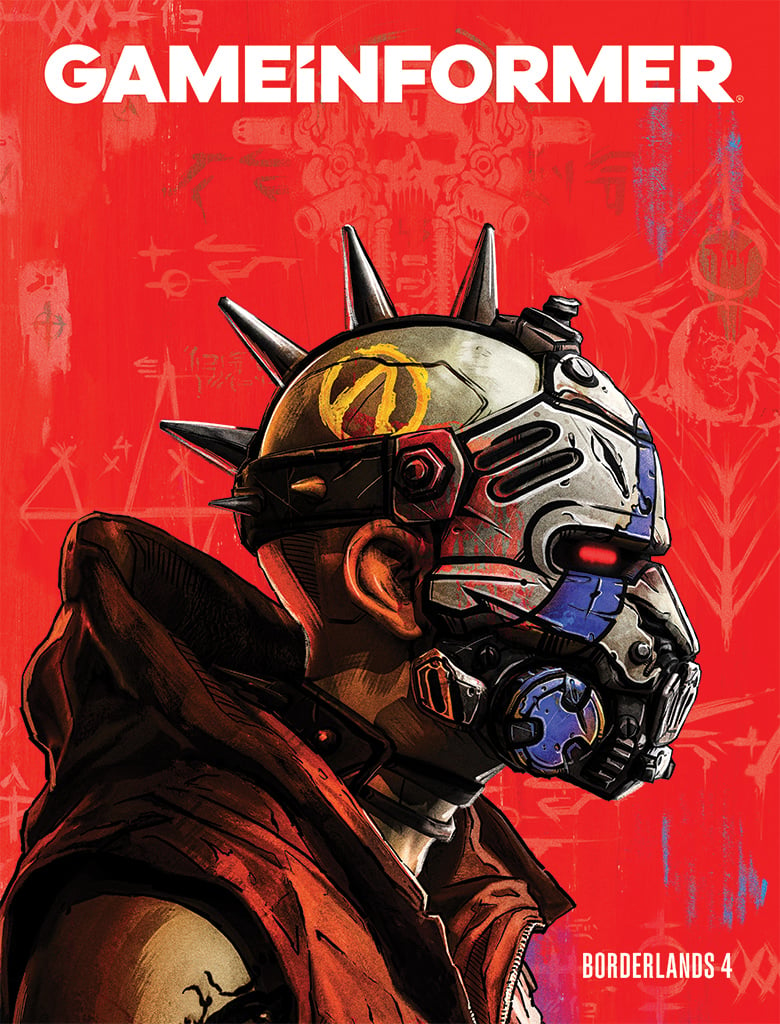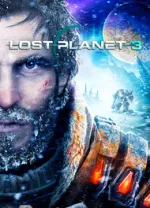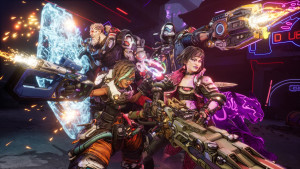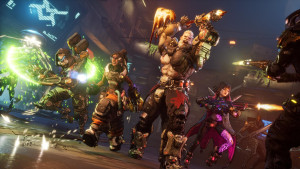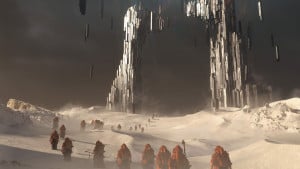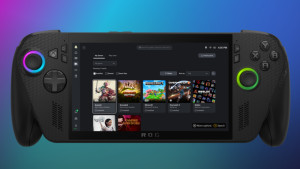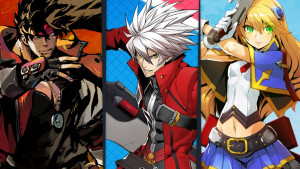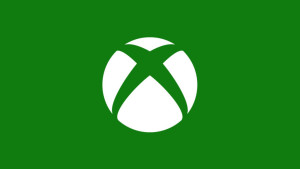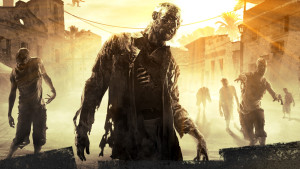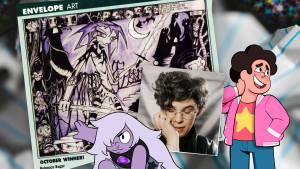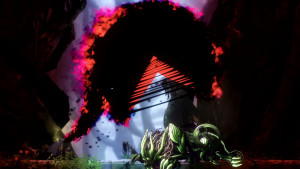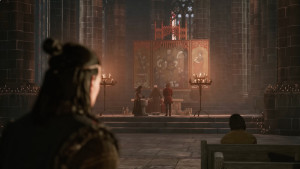Last chance to get your Borderlands 4 issue when ordered by July 1st. Subscribe Now!
Lost Planet 3

Fans of blowing up insectoid aliens in snowy environments got excited when Capcom announced Lost Planet 3.
The reveal came with an amazing trailer and some basic details, but we
wanted a little more information. We conducted a Q&A with Andrew
Szymanski, producer and project lead for Lost Planet 3. Read on to learn
more about the decision to make a prequel, new protagonist Jim, and
working with the Unreal engine.
Why did you decide to make Lost Planet 3 a prequel?
Our core concept for the game from the get-go was what we call “the
return to extreme conditions;” in other words, returning to a frozen
EDN-III that features the snow and ice landscapes that are synonymous
with the franchise. As some readers might be aware, EDN-III went through
a global-warming phase beginning at the end of LP1 and through LP2.
Thus, we extrapolated that if the planet was warming in the future (due
in no small part to human intervention) then it must have been at its
coldest in the past when there were few humans on the planet. In
addition to this, we were very keen on exploring the frontier nature of
the initial colonization efforts on the planet, with a small group of
pioneering people forced to work together to tame the wilderness. This
is an era in Lost Planet history that had never been explored before and
we felt it was ripe for telling compelling stories. In this way, the
idea of setting the game in the past before LP1 came together quite
organically.
What can you tell us about the new open world-mechanics, NPC interactions, and RPG-style quests and upgrades?
Lost Planet 3 is not a true open-world game in the sense of being able to go anywhere at any time and do anything. What it is, however, is a departure from the very linear sequence of levels that characterized the past two installments in the franchise. In LP3, we have what is called a “hub-and-spoke” system of level design that takes large outdoor hub areas and connects them with multiple branching paths to other smaller areas in which various missions take place. Many of these areas will be accessible from the beginning of the game, while others will require upgrades and unlocks in order to be able to access. This is all meant to give the player the sense of exploring a vast, largely uninhabited planet as new areas are constantly being revealed as the game progresses. Missions will drive the player to explore these various areas, and are largely grouped into two types: story-based missions that move the narrative forward and are completed in order, and various side missions and optional quests that can be tackled in order to earn rewards and explore more of the planet of EDN-III and delve further into the story of the game. The player will have access to “home” areas that feature NPCs, who give out missions and can be spoken to for hints and further background on the world. There will also be workstations, where the main character (Jim) can upgrade his personal equipment and weapons as well as expand the capabilities of his Utility Rig vehicle.
Why did you decide to focus on a single protagonist this time rather than the nameless pirates of the last game?
When looking at the setting of Lost Planet 3 and thinking about the
type of adventure that we wanted players to experience in this world, it
was a natural conclusion to return to a narrative-driven story campaign
strongly focused on a compelling main character. Our hope is that the
player will step into Jim’s shoes and relate to him, root for him, and
grow to like him. We want the player to feel as though they are learning
about EDN-III and taking Jim’s journey with him as he explores the
mysteries of the planet and helps to shape its future.
What can you tell us about Jim's character?
Jim is a tough, dedicated, charismatic, blue-collar laborer who has left his wife and newborn son on Earth in order to attempt to make a better life for them by taking hazardous, well-paying jobs on the newly discovered planet of EDN-III. Jim is not highly educated in the classical sense, but is naturally intelligent and has had his fair share of lessons at the proverbial “school of hard knocks.”
Jim’s love for his family is evident, as is his desire to work
together with the other colonists to create a foothold on the planet.
While not one that wantonly seeks out trouble or adventure, Jim knows
how to hold his own and deal with adversity. He quickly learns that
things are more complicated on EDN-III than he initially expected and
finds himself becoming an integral part of the events that unfold over
the course of the game.
What kind of multiplayer can fans expect?
Since we just announced the game, we are not speaking much in detail about the multiplayer just yet… other than to say that it has always been an important part of the Lost Planet franchise and we intend to continue that tradition.

Why move away from Capcom's MT Framework engine to Unreal?
The MT Framework engine is a very impressive piece of technology that
was developed in-house by Capcom engineers in order to enable the sorts
of amazing games that Capcom has produced at its internal studios,
including the first two Lost Planet games. In choosing to collaborate
with an external development partner for this installment, we needed to
carefully choose the technology platform that would be best able to
achieve the vision that Kenji Oguro (the Lost Planet franchise creative
director and father of the franchise) and I had set out for Lost Planet
3. As Spark Unlimited had copious experience working with the Unreal
Engine 3, as well as the drive and ability to make our shared vision a
reality, it was only natural to base the game on the Unreal platform. It
allows for rapid iteration that has vastly benefitted the collaboration
between Spark and Capcom Japan, and features a high level of visual
fidelity that has allowed us to uphold the reputation of Lost Planet as
one of the best-looking franchises of this console generation. We
believe that, through creative use of Unreal and a very unique art
direction, we have achieved a visual style that is unlike any other game
developed on this technology.
Will all mech combat switch to first-person?
Jim’s vehicle in Lost Planet 3 is called the Utility Rig and is a predecessor of the Vital Suits found in LP1 and LP2. As it is from a period in EDN-III’s history before the development of faster, maneuverable weaponized units, it is a massive lumbering piece of construction equipment that Jim uses to fulfill his contracts on the planet. It is also the largest vehicle ever featured in the franchise.
In order to further accentuate and emphasize the scale of the Utility
Rig, we have made a deliberate choice to present the game in a
first-person perspective whenever Jim is piloting the Rig, including in
combat situations. There are two goals in this: first, to indicate just
how massive the Rig is by allowing the player to look down upon
landscapes and enemies that towered above them while on foot; and
second, to show the visceral nature of the Utility Rig combat as Jim and
the player use the Rig’s attachments as improvised weapons to grab,
tear, and shred hostile Akrid creatures to bits in front of their eyes.
The trailer sets a more western tone than we've seen in the past from Lost Planet. Is this a deliberate direction?
As mentioned earlier, we have made a deliberate choice in the story
campaign to focus on a cinematic, narrative-driven experience showcasing
the exploits of Jim, and I believe the tone of the trailer reflects
that. Certainly, with the choice to work with a Western development
partner, the tone of the game will take a turn towards being more
deliberate and atmospheric in order to properly express our themes of
the hardships of colonization and the struggles facing the pioneers on
the frontier. That being said, all of the core team members that worked
on the first two games have been heavily involved with conceiving the
fundamental game concepts and working to shape the final product, so we
are confident that the game will exude an aura that is unmistakably Lost
Planet.
How does Spark’s past experience within the shooter genre help inform the development of this game?
The team that is currently working on Lost Planet 3 at Spark is an
all-new team composed of some skilled Spark veterans, along with a large
portion of industry heavyweights that have been gathered in Los Angeles
specifically to work on this game. As such, we are blessed with some
of the best talent available in the area as well as a very strong
creative leadership in the team working closely with Capcom. Spark and
its creative leads have a long history of working in the shooter genre
and are bringing to the table a strong foundation in core shooter
mechanics, such as intuitive controls and a robust player package. At
the same time, they have gone out of their way to make sure that the
feel of the game stays true to the franchise without some of the more
frustrating elements that have been present in past games in the series.
As a result, I am confident that we have a shooter experience that will
be inviting to both newcomers and series aficionados alike, while still
remaining unmistakably Lost Planet.
With major games like
Halo, COD, and Battlefield dominating the charts, competing in the
multiplayer space is tougher than it’s ever been. What are you going to
do to differentiate yourself?
Once again, we are not commenting on details of the multiplayer modes at this juncture. However, I will say that some of the core defining aspects of the Lost Planet franchise for me is the interaction between multiple human factions, the Akrid creatures, and the pilotable machines… that is something we will definitely be leveraging in our multiplayer implementation.
